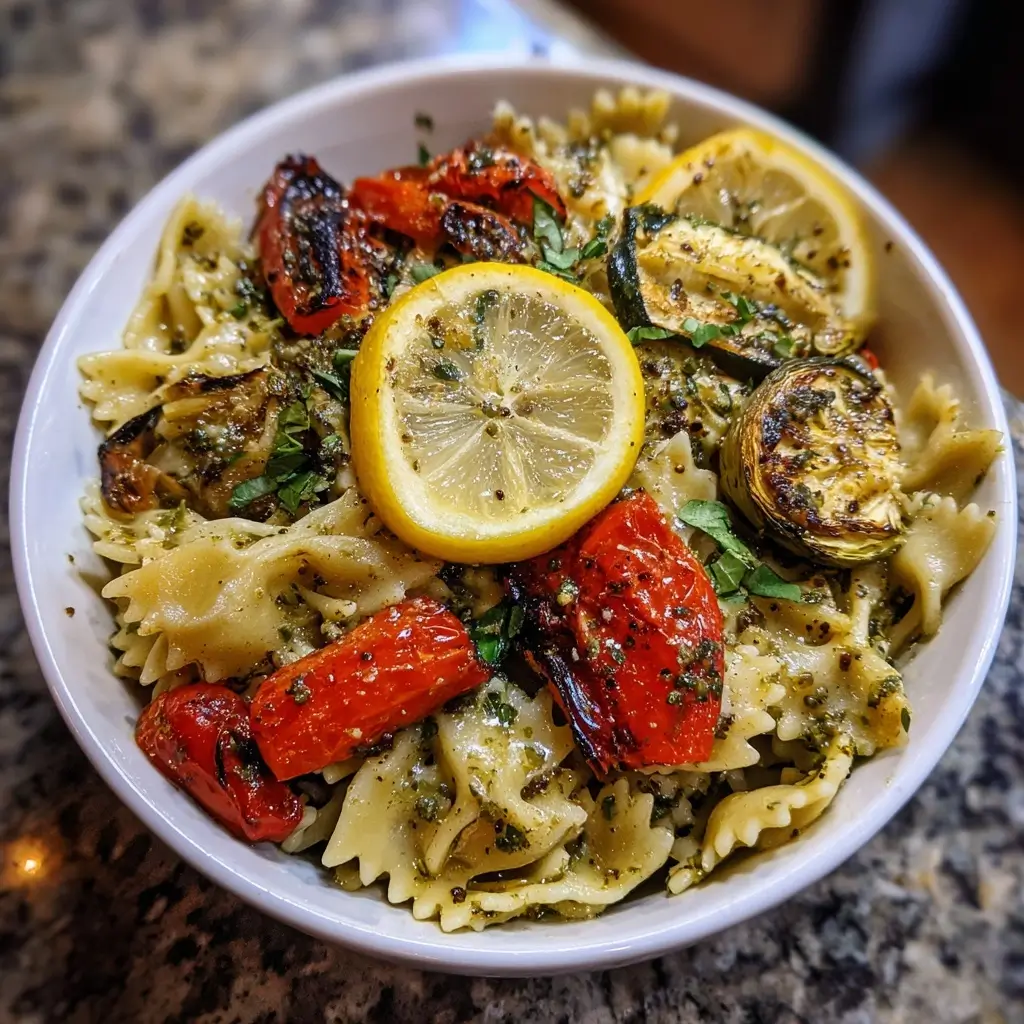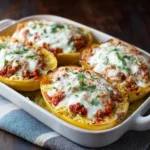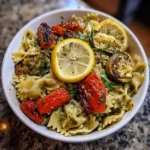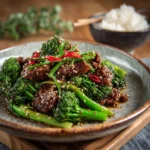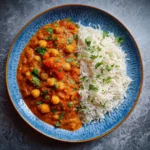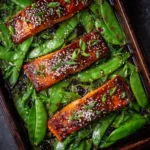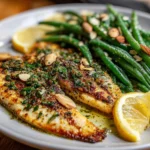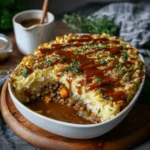Lemon Basil Pesto Pasta with Roasted Veggies
Looking for a fresh, vibrant, and wholesome meal that bursts with flavor? Lemon Basil Pesto Pasta with Roasted Veggies is the perfect fusion of zesty citrus, aromatic herbs, al dente pasta, and caramelized seasonal vegetables. This dish marries the bright tang of lemon with the earthy sweetness of roasted vegetables and the creamy richness of homemade basil pesto. Whether you’re preparing a weeknight dinner or impressing guests at a weekend brunch, this recipe delivers on taste, nutrition, and visual appeal. It’s naturally vegetarian, easily adaptable to vegan diets, and packed with plant-based goodness that satisfies both body and soul.
The History
Pesto, originating from Genoa in the Liguria region of Italy, has been a staple of Mediterranean cuisine for centuries. Traditionally made with fresh basil, pine nuts, garlic, Parmesan cheese, and olive oil, classic pesto celebrates simplicity and bold flavors. Over time, chefs and home cooks around the world have reimagined pesto using different herbs, nuts, and flavor infusions. The addition of lemon to pesto is a modern twist that enhances its freshness and cuts through the richness—perfect for spring and summer dishes. Meanwhile, roasting vegetables—a technique used since ancient times—brings out their natural sugars and adds depth. Combining roasted veggies with pesto-coated pasta is a contemporary evolution of rustic Italian cooking, inspired by farm-to-table movements and global culinary fusion. This Lemon Basil Pesto Pasta with Roasted Veggies embodies that spirit: honoring tradition while embracing innovation and seasonal eating.
Ingredients Breakdown
The magic of this dish lies in its balance of textures and tastes, each ingredient playing a crucial role:
- Fresh Basil: The star of the pesto, providing a sweet, slightly peppery aroma and vibrant green color.
- Garlic: Adds pungent depth and complexity to the pesto base.
- Lemon: Zest and juice bring brightness and acidity, elevating the entire dish and balancing the oiliness of the pesto.
- Pine Nuts (or Walnuts/Almonds): Provide a buttery texture and nutty foundation; pine nuts are traditional, but walnuts or almonds offer affordable, accessible alternatives.
- Extra Virgin Olive Oil: High-quality oil ensures a smooth, rich consistency and contributes heart-healthy monounsaturated fats.
- Parmesan Cheese (or Nutritional Yeast for Vegan Option): Adds umami and saltiness; nutritional yeast mimics this flavor in dairy-free versions.
- Pasta: Choose whole wheat, chickpea, or gluten-free varieties for added nutrition, or go classic with linguine or fusilli.
- Roasted Vegetables: A colorful medley typically includes bell peppers, zucchini, cherry tomatoes, red onions, broccoli, and eggplant—each contributing unique textures and nutrients.
- Salt & Pepper: Essential for seasoning at every stage.
- Olive Oil (for roasting): Helps vegetables caramelize and develop a smoky-sweet flavor.
Optional enhancements include red pepper flakes for heat, sun-dried tomatoes for chewy intensity, or toasted breadcrumbs for crunch.
Step-by-Step Recipe
- Preheat Oven: Set your oven to 400°F (200°C). Line two large baking sheets with parchment paper to prevent sticking.
- Prepare Vegetables: Wash and chop 1 red bell pepper, 1 yellow bell pepper, 1 medium zucchini, 1 small eggplant, 1 cup cherry tomatoes, and 1 small red onion into even bite-sized pieces. Toss them in a large bowl with 3 tablespoons of olive oil, 1 teaspoon sea salt, ½ teaspoon black pepper, and optional seasonings like dried oregano or smoked paprika.
- Roast Vegetables: Spread the vegetables evenly across the baking sheets in a single layer. Roast for 25–30 minutes, flipping halfway through, until tender and golden-brown at the edges. Remove and set aside.
- Cook Pasta: Bring a large pot of salted water to a boil. Add 12 oz (340g) of pasta and cook according to package instructions until al dente. Reserve ½ cup of pasta water before draining.
- Make Lemon Basil Pesto: In a food processor, combine 2 cups packed fresh basil leaves, ¼ cup pine nuts (toasted if desired), 3 cloves garlic, zest of 1 lemon, juice of ½ lemon, ½ cup grated Parmesan (or ⅓ cup nutritional yeast), and a pinch of salt. Pulse to chop. With the motor running, slowly drizzle in ⅓ cup extra virgin olive oil until smooth and emulsified. Taste and adjust seasoning, adding more lemon, salt, or cheese as needed.
- Combine Everything: In a large mixing bowl, add the drained pasta, roasted vegetables, and about ⅔ of the pesto. Toss gently to coat. Add reserved pasta water, a tablespoon at a time, to loosen the sauce and help it cling to the noodles.
- Serve: Divide among plates or bowls. Drizzle with remaining pesto, garnish with extra lemon zest, fresh basil leaves, cracked black pepper, and optional shaved Parmesan or toasted pine nuts.
Tips
- Toast Your Nuts: Lightly toasting pine nuts, walnuts, or almonds before blending deepens the pesto’s flavor. Do this in a dry skillet over medium heat for 3–5 minutes until fragrant.
- Use Fresh Ingredients: Fresh basil and high-quality olive oil make a huge difference in pesto. Avoid dried basil—it lacks the vibrancy needed for authentic flavor.
- Don’t Overcook the Pasta: Al dente pasta holds up better when mixed with sauce and vegetables. Overcooked pasta becomes mushy, especially when reheated.
- Roast Veggies Evenly: Cut vegetables into uniform sizes to ensure even roasting. Denser veggies like carrots or potatoes may need a head start compared to softer ones like zucchini.
- Reserve Pasta Water: The starchy liquid helps bind the pesto to the pasta, creating a silky, restaurant-quality finish.
- Adjust Consistency: If pesto is too thick, thin it with a little olive oil or lemon juice. For a creamier texture, add a teaspoon of Greek yogurt or avocado.
- Make Ahead: Pesto can be stored in an airtight container with a thin layer of oil on top in the fridge for up to 1 week or frozen for up to 6 months.
Variations and Customizations
This recipe is highly versatile and welcomes creativity:
- Protein Boost: Add grilled chicken, shrimp, tofu, tempeh, chickpeas, or white beans for extra protein.
- Dairy-Free/Vegan: Substitute Parmesan with nutritional yeast and use vegan pasta to keep it entirely plant-based.
- Gluten-Free: Use certified gluten-free pasta made from brown rice, lentils, or quinoa.
- Herb Variations: Mix in arugula, parsley, cilantro, or mint for a different herbal profile.
- Nut-Free Pesto: Replace nuts with sunflower seeds or pumpkin seeds for a safe option for allergies.
- Spicy Kick: Add ½ teaspoon red pepper flakes to the pesto or sprinkle with chili oil before serving.
- Seasonal Swaps: In fall, use butternut squash, Brussels sprouts, and apples. In winter, try root vegetables like parsnips and turnips. Spring calls for asparagus, peas, and artichokes.
- Creamy Version: Blend in ¼ avocado or 2 tablespoons ricotta for a richer, creamier pesto.
Health Considerations and Nutritional Value
This dish shines as a nutrient-dense, balanced meal. Here’s why it supports a healthy lifestyle:
- Rich in Antioxidants: Basil, lemon, and colorful vegetables are loaded with vitamins C and E, beta-carotene, and flavonoids that combat oxidative stress.
- Heart-Healthy Fats: Olive oil and nuts provide monounsaturated and polyunsaturated fats, which support cardiovascular health and reduce inflammation.
- Fiber-Packed: Whole grain or legume-based pasta and fiber-rich vegetables promote digestive health and help regulate blood sugar levels.
- Low in Added Sugar: Naturally sweet roasted vegetables eliminate the need for refined sugars.
- Vegetarian & Potentially Vegan: A great plant-forward option that supports sustainable eating habits.
- Calcium & Protein Source: Parmesan cheese and optional legumes or nuts contribute to daily protein and calcium needs.
Nutritional Estimate (per serving, serves 4):
- Calories: ~450–550 (varies by ingredients)
- Protein: 12–18g
- Fat: 20–28g (mostly healthy fats)
- Carbohydrates: 50–60g
- Fiber: 8–10g
- Vitamin C: 90%+ DV
- Vitamin A: 60%+ DV
- Iron: 15–20% DV
Note: Values depend on specific ingredients used, such as pasta type, cheese amount, and oil quantity.
Ingredients
For the Roasted Vegetables:
- 1 red bell pepper, chopped
- 1 yellow bell pepper, chopped
- 1 medium zucchini, sliced
- 1 small eggplant, cubed
- 1 cup cherry tomatoes, halved
- 1 small red onion, sliced
- 3 tbsp extra virgin olive oil
- 1 tsp sea salt
- ½ tsp black pepper
- 1 tsp dried oregano (optional)
For the Lemon Basil Pesto:
- 2 cups fresh basil leaves, packed
- ¼ cup pine nuts (or walnuts/almonds)
- 3 cloves garlic
- Zest of 1 lemon
- Juice of ½ lemon
- ½ cup grated Parmesan cheese (or nutritional yeast)
- ⅓ cup extra virgin olive oil
- Salt to taste
For the Pasta:
- 12 oz (340g) pasta of choice
- Salt for boiling water
- ½ cup reserved pasta water
Garnishes (optional):
- Extra lemon zest
- Fresh basil leaves
- Cracked black pepper
- Shaved Parmesan
- Toasted pine nuts
Directions
- Preheat oven to 400°F (200°C). Line two baking sheets with parchment paper.
- In a large bowl, toss all chopped vegetables with olive oil, salt, pepper, and oregano. Spread evenly on baking sheets.
- Roast for 25–30 minutes, flipping once halfway, until tender and caramelized. Set aside.
- Bring a large pot of salted water to a boil. Cook pasta according to package directions until al dente. Reserve ½ cup pasta water, then drain.
- While pasta cooks, make pesto: In a food processor, combine basil, pine nuts, garlic, lemon zest, lemon juice, Parmesan, and a pinch of salt. Pulse to blend.
- With the motor running, slowly pour in olive oil until smooth and creamy. Taste and adjust seasoning.
- In a large bowl, combine warm pasta, roasted vegetables, and ⅔ of the pesto. Toss well, adding reserved pasta water as needed to create a glossy sauce.
- Divide into bowls. Top with remaining pesto, garnishes, and a final squeeze of lemon if desired.
- Serve immediately, ideally while warm and fragrant.
FAQ
Can I make this ahead of time?
Yes! Roast the vegetables and prepare the pesto up to 2 days in advance. Store separately in airtight containers in the refrigerator. Reheat veggies before tossing with freshly cooked pasta and pesto.
How do I store leftovers?
Keep in an airtight container in the fridge for up to 4 days. Reheat gently in a skillet with a splash of water or olive oil to refresh the texture.
Can I freeze the pesto?
Absolutely. Freeze in ice cube trays for portioned use later. Transfer to freezer bags once solid and store for up to 6 months.
Is this recipe kid-friendly?
Many children enjoy the mild sweetness of roasted vegetables and the creamy, herby pesto. You can reduce garlic or omit lemon zest if preferred. Serve with fun pasta shapes like rotini or bowties.
What pasta works best?
Fusilli, penne, farfalle, or linguine work well due to their ability to hold onto pesto. For healthier options, try chickpea, lentil, or whole wheat pasta.
Can I use store-bought pesto?
Yes, but making it fresh gives superior flavor and lets you control ingredients. If using store-bought, look for one with real basil, minimal additives, and no artificial preservatives.
Why did my pesto turn brown?
Exposure to air causes oxidation. To prevent this, press plastic wrap directly on the surface or cover with a thin layer of olive oil. Using a squeeze of lemon juice also helps preserve color.
Summary
Lemon Basil Pesto Pasta with Roasted Veggies is a vibrant, nutritious, and flavorful dish that brings together the zest of citrus, the fragrance of fresh herbs, and the sweetness of caramelized vegetables. Perfect for any season, it’s a satisfying meal that celebrates fresh ingredients and mindful cooking.
